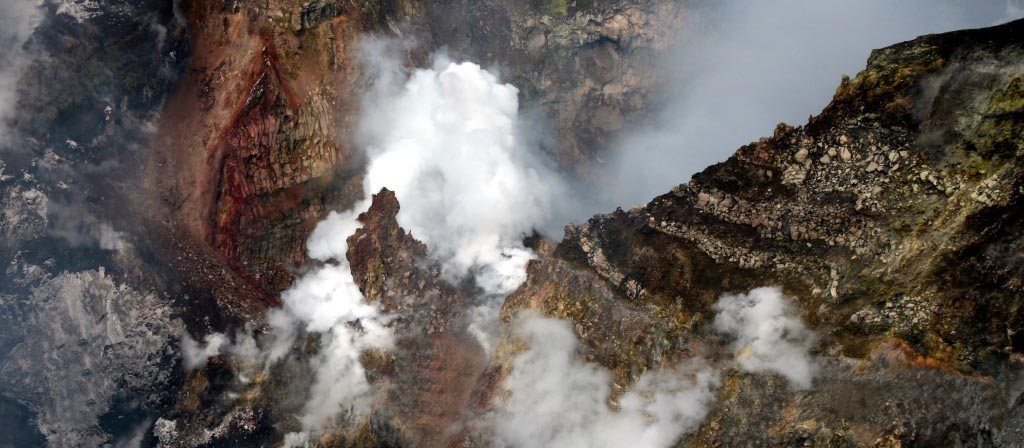Evolutionary history of the Volcano

Evolutionary history of the Volcano
Etna is a great stratum volcano with persistent activity that stands along the eastern coast of Sicily, in the area of collision between the African plate and the European plate, with a diameter base of about 40 Km and over 3.300 metres above sea level in height. Stratum volcano, because if we observe a stratigraphic section we can note a more or less regular alternation among the pyroclastic levels positioned by the explosive conditions and settled lava that originated from effusive processes. Poligenic because Mount Etna is the result of the overlapping and coalescence of different structures formed by lava flows and pyroclastic products at various times. The structure of Etna has changed with time, the first volcanic manifestations were inside a sea gulf that extended partially above the actual area of the volcano and was characterized by underwater eruptions. This first phase was very long, dated about 550.000 – 200.000 years ago, that has given origin to an expanding platform of lava that followed the morphologic layer that on this platform grew various formations, a central conduit whose material went to cover the ancient volcanos (Ancient centre Alcalini 168.000 – 80.000 years about, Trifoglietto 80.000 – 35.000 years about and Mongibello that is 35.000 years old today). With the passing of time, there has been a migration of eruptive points from south-east towards north-west which is connected with the evolution of the collision between the African and European plates. An important morphological element in the formation of Etna is the Bove Valley, a huge depression bordered by steep walls situated on the eastern side that measures a maximum extension from east to west of about 7 kilometers and from north to south about 5 km with approximately a horse-shoe form with an opening towards the Ionian sea. The Bove Valley has always held a notable importance in the comprehension of the evolution of Etna, as the surfaces along the steep walls give us a unique opportunity to reconstruct a succession of stratigraphic details. Some authors believe that the Bove Valley was formed by the slithering of great portions of lava structure along parallel lines as teutonic parts of the formation. Other authors maintain instead that it is the result of a coalition of a series of collapses that originated from freatomagmatic explosions; others believe that the Bove Valley was formed by an imbalance of existing masses between the eastern side that borders with the deep Ionian basin and the remaining sides that the substratum was maintaied by the mountain chains of the Nebrodi and Peloritani. Moreover this depression, marked by the impressive tectonic formations, that were intersected near the summit area and opened to east towards the sea, is compatible with a structure of the kind “graben a settore” (tectonic depression) that originated a little before and during the birth of the Trifoglietto centres. There are four craters present in the summit area (La Voragine, Bocca Nuova, North-East and South-East craters), each of which presents its own conduit at least for a few hundred meters, which allows each crater to present a different kind of activity.
